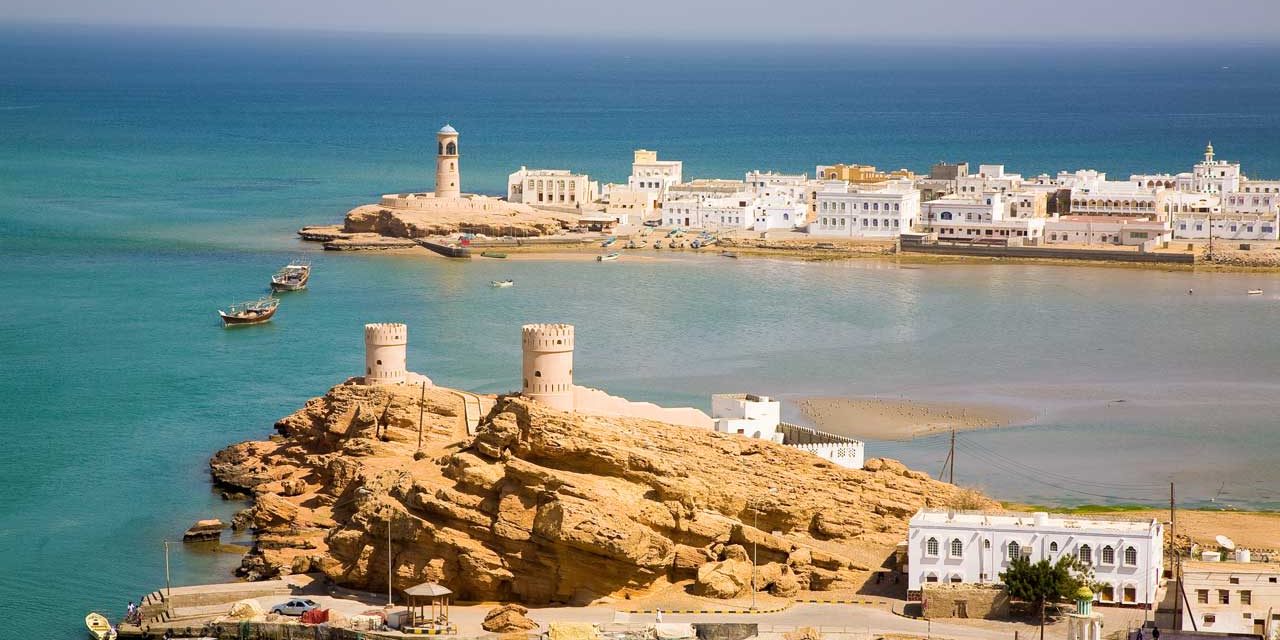Should government leaders from other resource-rich economies want to adapt to the fourth industrial revolution, they would do well to follow Oman’s lead.
From the gleaming towers of Doha to the galleries of the Louvre Abu Dhabi, even a casual observer of the Middle East and North Africa may conclude that this sun-drenched part of the world is endowed with tremendous wealth. Indeed, the economies of the region together possess roughly half of the world’s proven oil and gas reserves, an asset that’s proven incredibly lucrative in the late 20th and early 21st centuries, fueling the growth and development of our modern global economy. But times are changing. No matter its past benefits, the region’s abundance of fossil fuels—and its considerable dependence upon them—presents the governments of the region with some daunting risks.
Of course, such is the nature of resource-rich economies. Governments and economies that depend too heavily on the extraction and sale of natural resources are often beholden to an indifferent global marketplace. We’ve witnessed as much in Nigeria, Venezuela, and elsewhere since the end of the global commodities boom, when tanking oil prices often translated to tanking economies. And with the global prices of fossil fuels continuing their downward trend today, government leaders in the Middle East and North Africa are increasingly facing similar circumstances. The resulting uncertainty poses a tough question, “What can be done?”
Generally speaking, the key to withstanding the pressures of sustained low fossil fuel prices (or any commodity for that matter) is economic diversification, whereby public and private sector investment is diverted away from fossil fuel production and into alternative, value-added market sectors, effectively reinforcing the economy’s resilience in anticipation of exogenous market shocks. This premise is simple enough, but as we’ve seen in nations ranging from South Africa to Iraq, execution is a whole other ball game.
The same is true in much of the Middle East and North Africa. According to a recent paper from the Peterson Institute for International Economics, a think tank, the economic futures of many MENA countries are particularly vulnerable. Widespread youth unemployment and the deepening global trend of divestment from fossil fuels only compound the existential risks of persistently low global oil prices. For their part, many countries in the region have made efforts to diversify since the 1980s, though they’ve produced negligible results.
That’s because this is easier said than done. Regardless of their good intentions, economic diversification efforts of resource-rich economies, including in the MENA region, are frequently impeded by insufficient human capital—often a result of their own negligence. In decades past, the perceived long-term profitability of natural-resource industries often permitted responsible governments to omit public investment in education and technical training, leaving regional workforces woefully ill-equipped to adapt to the demands of an evolving labor market.
Fortunately, there are exceptions.
Chief among them is the Sultanate of Oman, where under the auspices of the Oman Vision 2040, the government has begun taking measures to “future-proof” the national economy, a development plan perhaps second only to Saudi Arabia’s Vision 2030 in its size and scope. More specifically, the Sultanate’s objectives in this program are to achieve 6 per cent GDP growth, with 93 per cent originating from non-oil sectors, namely tourism, logistics, manufacturing, fisheries and mining.
This, however, will require considerable effort on part of the Omani government, as well as global investors, industry leaders, civil society organizations and other institutions. What’s more, the already tall order of economic diversification for resource rich economies is exacerbated by the rate and scale of the fourth industrial revolution (4IR), whereby digitization and technological innovation are transforming the global economy.
To adapt, any diversification effort will require a reformed approach to human capital expenditures, one that prioritizes high-skills education and labor force training in order to equip today’s workforce with tomorrow’s skills. Accordingly, the Omani government has unveiled a series of promising high-level summits and forums to hasten this process.
One such event is the MENA Innovation Summit 2019, which is scheduled to be held in Muscat this coming September. Under the official patronage of the Omani Minister of Higher Education, the Summit will convene a range of stakeholders, including ministers, senior government officials, academic and civil society organizations to assess the strengths and weaknesses of the region’s education infrastructure. More importantly, this Summit will afford regional entrepreneurs and innovators in the information and communications technology (ICT) sector with an unprecedented opportunity to showcase their products to potential investors and institutional end-users. In effect this Summit will leverage inventive ICT to revolutionize the Sultanate’s decades-long effort to improve the nation’s education system.
And as we’ve already seen results from similar summits, such as COMEX 2019, events like these are key to effectuating the economic diversification and modernization plans of Oman and other resource-rich countries in the region. These summits are designed to facilitate the dialogue and network-building necessary to bridge the gap separating innovators and entrepreneurs from much-needed capital and institutional support, a process that will ultimately establish the state apparatuses capable of supporting a modern economy.
Needless to say, this Summit is a promising development. Along with the UAE and Qatar, Oman has long been a regional leader in economic diversification, making the Summit simply another demonstration of the Sultanate’s prescience and pragmatism. Should government leaders from other resource-rich economies want to adapt to the fourth industrial revolution, they would do well to follow Oman’s lead.






